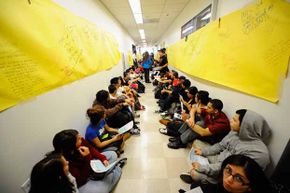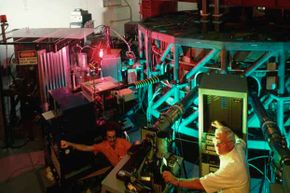More than ever, a college degree is critical to getting the kind of job that can let you support a family and save for the future. At the same time, the total cost of a college education — tuition, fees, room and board, and books — is skyrocketing out of reach of the average American family. According to one study, the published tuition and fees at U.S. colleges and universities rose 1,120 percent from 1978 to 2012. Over that same period, the price of medical care grew only 601 percent, and the price of food increased by 244 percent [source: Jamrisko].
Why exactly has college become so insanely expensive? Has the government drastically cut its higher education funding? Are schools building flashy stadiums and luxurious dorms to lure in more applicants? Or does the price of college — as exorbitant as it seems — accurately reflect its market value?
Advertisement
We'll debunk the myths and reveal some surprising sources of college costs in our list of the 10 reasons why college costs so much. Let's start with those decked-out dorms.










